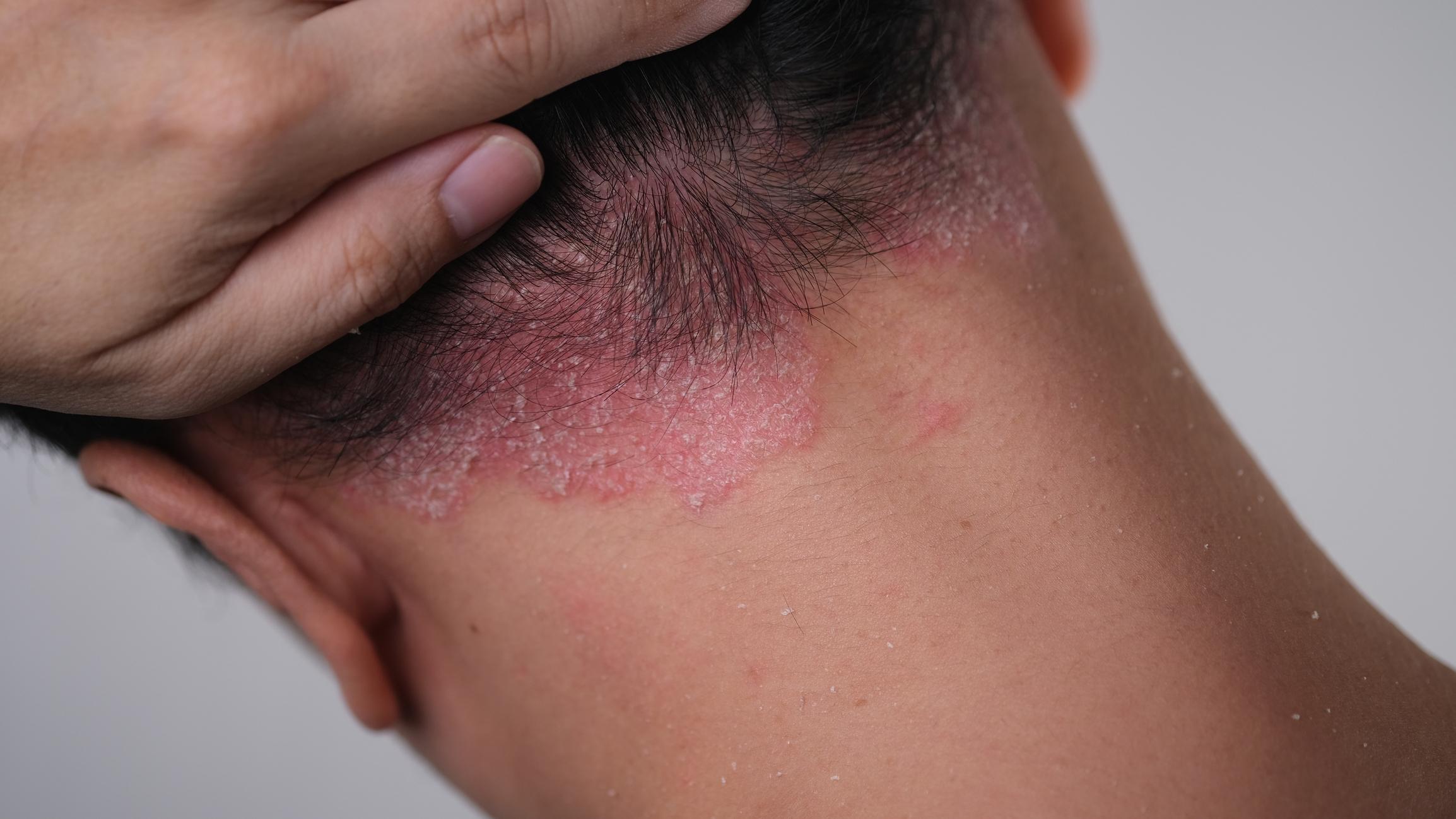A third of patients will develop rheumatism or psoriatic arthritis, a disease that combines joint inflammation and pain with symptoms of psoriasis, according to a study.

- Red patches covered in scales on the skin, combined with joint pain: a quarter of people suffering from psoriasis are also affected by symptoms of arthritis, according to a study.
- “The 25% figure confirms current knowledge that up to a third will develop psoriatic arthritis, which combines inflammation and pain in the joints and tendons with the symptoms of psoriasis.”
- The challenge, according to the researchers, is to predict which psoriasis patients are most at risk of developing arthritis, in order to diagnose and treat them early.
Red patches covered with scales on the skin, combined with joint pain: no less than a quarter of people (25%) suffering from psoriasis are also affected by symptoms of arthritis. This is what emerges from the first results of the international study HYPOCRATES Prospective Observational Study (HPOS), conducted so far among 3,000 people suffering from this chronic skin disease.
One third of psoriasis patients will have joint problems
For three years, researchers from the universities of Oxford, Manchester (UK) and University College Dublin (Ireland) followed patients to see which of them would also be affected by joint problems. Participants had to fill out online questionnaires and mail in small blood samples by pricking their finger.
“The figure of 25% [soit 712 patients] confirms current knowledge that up to a third will develop psoriatic arthritis, a condition that combines inflammation and pain in the joints and tendons with the symptoms of psoriasis”we can read in a communicated.
“Psoriatic arthritis can be debilitating, says a British man who has suffered from the disease for years. For me, it’s also pretty hit and miss. I can be fine for days, then all of a sudden I’m bedridden with joint pain. The only joints that haven’t been affected are my elbows. Everywhere else I’ve suffered flare-ups, even in my jaw.”

Identify patients at risk of psoriatic arthritis to treat them preventively
The same patient adds: “GPs are not always qualified enough to spot symptoms, which can manifest themselves in different ways. Receiving a diagnosis is often a relief.” The challenge, according to the authors of the study, is therefore to predict which patients with psoriasis are most at risk of developing arthritis, in order to diagnose and treat them early. “These people might benefit from preventive care, such as medications or lifestyle interventions such as exercise and stress management.”the researchers emphasize.
The HPOS study is still in its early stages: the universities plan to recruit a total of 25,000 people with psoriasis to gather more data on the link between psoriasis and arthritis, and to identify risk factors for psoriatic arthritis, including possible “genetic changes”.
















